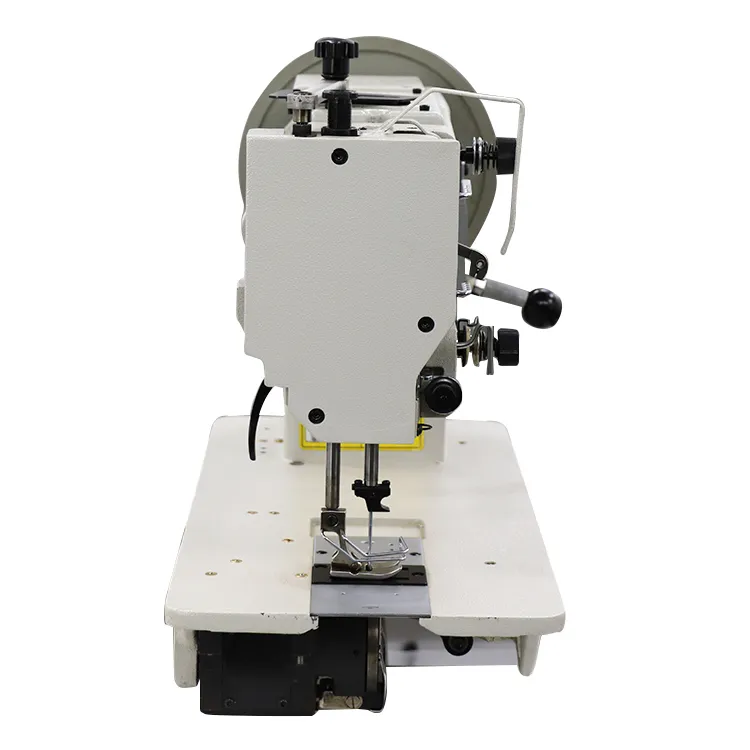automotive sewing machine
The Evolution and Importance of Automotive Sewing Machines
In the realm of automotive manufacturing, the significance of automotive sewing machines cannot be understated. These specialized machines are critical in the production of the interior components of vehicles, including seats, upholstery, headliners, and other fabric elements. As the automotive industry continues to evolve, so too does the technology and efficiency of sewing machines used in this field.
Historically, the sewing machines employed in automotive manufacturing have progressed significantly from their traditional counterparts. Early sewing machines were manually operated and lacked the precision needed for large-scale production. However, with the advent of technology, modern automotive sewing machines are equipped with advanced features such as automated threading, programmable stitching patterns, and even robotics that enhance both speed and accuracy.
One key factor driving the evolution of automotive sewing machines has been the increasing demand for customization within the automotive sector. Consumers today are looking for personalized experiences, and this extends to the interiors of their vehicles. Manufacturers now rely on sewing machines that can handle diverse materials, ranging from high-quality leather to synthetic fabrics, each requiring different handling and stitching techniques. The ability to quickly switch between these materials not only allows for greater customization but also helps manufacturers keep pace with the rapid changes in consumer preferences.
Additionally, the integration of computer numeric control (CNC) technology into automotive sewing machines has revolutionized the manufacturing process. CNC sewing machines can execute complex designs with high precision and repeatability, significantly reducing the likelihood of human error. This technology enables manufacturers to create intricate patterns and detailed stitching that enhance the aesthetic appeal of vehicle interiors. The meticulous attention to detail that modern sewing machines provide reflects the overall quality and craftsmanship of the vehicles themselves.
automotive sewing machine

The automotive industry is also increasingly focusing on sustainability, and sewing machines play a role in this shift. Many manufacturers are exploring eco-friendly materials and sustainable manufacturing processes. Advanced sewing machines that minimize waste through computerized cutting and sewing techniques are gaining traction. These machines can efficiently utilize fabric, reducing off-cuts and contributing to a more sustainable production model. Additionally, manufacturers are seeking machines with lower energy consumption, aligning with the broader goal of reducing the environmental footprint of automotive manufacturing.
As the automotive industry incorporates more technology, the importance of worker training on advanced sewing machines becomes paramount. Skilled operators are essential to leverage the full capabilities of these machines. Training programs are increasingly focusing on both the technical skills needed to operate sophisticated equipment and the creative skills necessary to innovate and bring new designs to life. This investment in the workforce not only enhances productivity but also fosters a culture of innovation essential to remain competitive in an ever-evolving marketplace.
Furthermore, the rise of electric and autonomous vehicles introduces new challenges and opportunities for automotive sewing. Interiors of future vehicles will likely require innovative designs that accommodate new technologies, such as integrated screens and multifunctional control interfaces. Sewing machines that can adapt to these changes will be crucial in the transition to these next-generation vehicles, thus ensuring that manufacturers can keep pace with a rapidly changing industry.
In summary, automotive sewing machines represent a vital component of the automotive manufacturing process. With their evolution driven by technology, customization demands, sustainability efforts, and the changing landscape of vehicle design, these machines will continue to be at the heart of automotive interior production. As the industry progresses, the role of sewing machines will undoubtedly expand, adapting to meet the challenges and innovations that lie ahead. The future of automotive interiors will depend not only on the vehicles themselves but also on the intricate craftsmanship afforded by advanced sewing technology.
-
Heavy Duty Leather Sewing Machine: A Must-Have for Professional LeatherworkNewsMay.28,2025
-
Leather Sewing Machine: Essential for High-Quality LeathercraftNewsMay.28,2025
-
Extra Heavy Duty Sewing Machine for Premium Leather ApplicationsNewsMay.28,2025
-
Walking Foot Cylinder Arm Sewing Machine: Precision and Power CombinedNewsMay.28,2025
-
Industrial Cylinder Arm Sewing Machine: Engineered for High-Performance StitchingNewsMay.28,2025
-
Cylinder Bed Sewing Machine: A Powerful Solution for Precision StitchingNewsMay.28,2025
-
Zigzag Sewing MachineNewsMay.12,2025





























